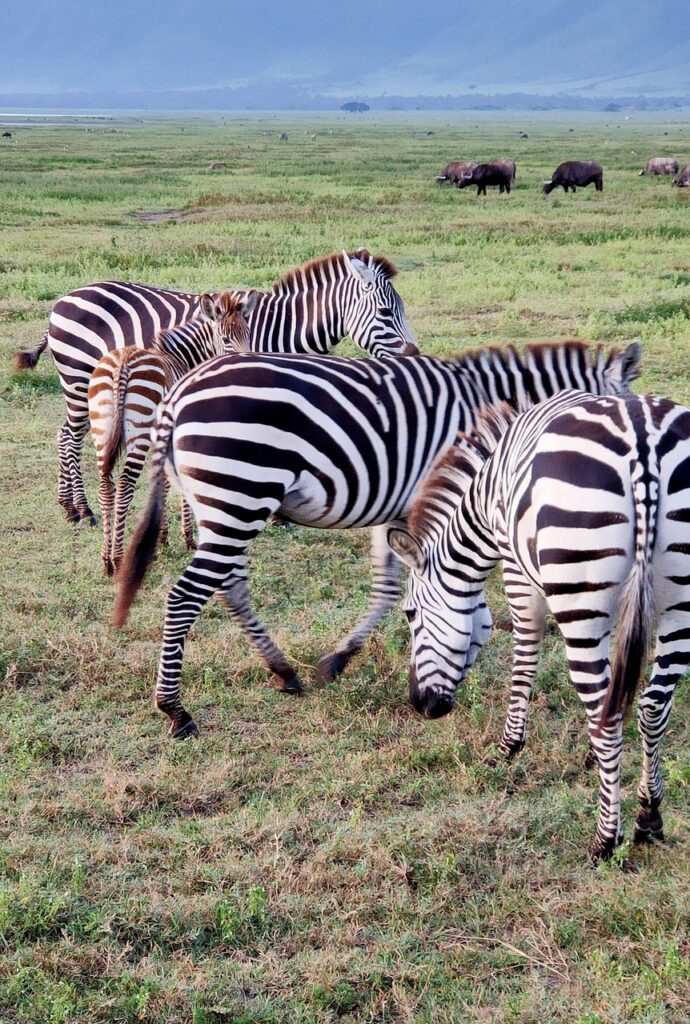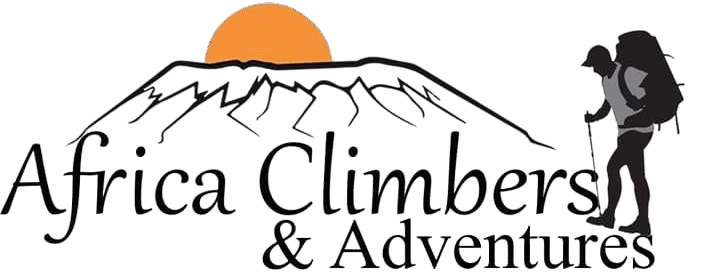Rongai Route 6 Days Overview
The 6 Days Kilimanjaro Rongai Route is the only route that approaches Kilimanjaro from the northern side, near the Kenyan border. Known for its dry climate, gradual ascent profile, and less crowded trails, Rongai is ideal for trekkers seeking a more remote and quiet climb. The route offers stunning wilderness scenery, diverse ecosystems, and panoramic views across Kenya.
This route gradually ascends through pine forests, moorlands, and alpine deserts, eventually joining the southern circuit near Kibo Hut before reaching Uhuru Peak. The descent is made via the Marangu Route, providing a scenic round journey across different terrain.
Perfect for beginners and experienced hikers alike, the Rongai Route combines adventure, comfort, and success rate in a 6-day trek to the Roof of Africa.
Tour Highlights
Only route approaching Kilimanjaro from the north
Remote and less-traveled path
Drier and more stable weather conditions
Gentle and steady acclimatization profile
Crosses diverse landscapes from forest to alpine desert
Descent via Marangu Route offers varied views
✅ 6 Days Kilimanjaro Rongai Route – Day-by-Day Itinerary
Day 1: Rongai Gate (1,950m) – Simba Camp (2,600m)
After a scenic drive to the Rongai Gate, begin your trek through a beautiful pine forest. You’ll steadily gain altitude as you reach Simba Camp, nestled in the moorlands.
Hiking Time: 4–5 hours
Elevation Gain: +650m
Habitat: Forest and Heath
Meals: Lunch & Dinner
Overnight: Simba Camp
Day 2: Simba Camp – Second Cave Camp (3,450m)
Today’s trail ascends gradually through open moorland, with views of Kibo Peak and the eastern ice fields. You’ll arrive at Second Cave Camp for acclimatization.
Hiking Time: 5–6 hours
Elevation Gain: +850m
Habitat: Moorland
Meals: Breakfast, Lunch & Dinner
Overnight: Second Cave Camp
Day 3: Second Cave – Kikelewa Camp (3,600m)
After breakfast, head east across the Mawenzi Saddle, trekking towards Kikelewa Camp, set in a sheltered valley. The scenery becomes increasingly alpine with distant views of the jagged Mawenzi Peak.
Hiking Time: 3–4 hours
Elevation Gain: +150m
Habitat: Moorland to Alpine Zone
Meals: Breakfast, Lunch & Dinner
Overnight: Kikelewa Camp
Day 4: Kikelewa – Mawenzi Tarn Camp (4,330m)
You’ll climb steeply up to the Mawenzi Tarn, situated beneath the impressive spires of Mawenzi Peak. This is one of the most scenic campsites on the route, and offers excellent acclimatization.
Hiking Time: 4–5 hours
Elevation Gain: +730m
Habitat: Alpine Desert
Meals: Breakfast, Lunch & Dinner
Overnight: Mawenzi Tarn Camp
Day 5: Mawenzi Tarn – Kibo Hut (4,700m)
Today’s trek crosses the saddle between Mawenzi and Kibo. It’s a long but gentle walk across an arid plateau, preparing you for the summit push. You’ll rest early at Kibo Hut before your midnight ascent.
Hiking Time: 4–5 hours
Elevation Gain: +370m
Habitat: Alpine Desert
Meals: Breakfast, Lunch & Dinner
Overnight: Kibo Hut
Day 6: Kibo Hut – Uhuru Peak (5,895m) – Horombo Hut (3,720m)
Start your summit attempt around midnight. After reaching Gilman’s Point (5,681m), continue to Uhuru Peak, the highest point in Africa. Celebrate briefly before descending to Horombo Hut via the Marangu Route.
Hiking Time: 12–14 hours
Elevation Gain: +1,195m, then descend -2,175m
Habitat: Arctic to Moorland
Meals: Breakfast, Lunch & Dinner
Overnight: Horombo Hut
Final Descent (Optional Day 7 if needed): Horombo Hut to Marangu Gate (1,860m)
Although this trek is a 6-day climb, many climbers descend on the 7th day to Marangu Gate, receive a summit certificate, and transfer back to Moshi or Arusha.
What’s Included
Kilimanjaro National Park entry & camping fees
Professional mountain guides, porters & cook
All camping equipment (tents, mats, mess tent)
Full-board mountain meals and purified water
Airport transfers & transport to trailhead
Oxygen, pulse oximeter, and emergency first-aid
Summit certificate
What to Bring
Warm layers for day and night (base layer, fleece, waterproof)
Hiking boots, thermal socks, and gloves
Hat, sunglasses, and sunscreen
Sleeping bag (four-season or sub-zero rated)
Backpack & water bottles
Headlamp & personal toiletries
Best Time to Climb
January to March – Cold but quieter
June to October – Dry and sunny, ideal for clear views
Short Important Information
Acclimatization is Key
Altitude sickness is the biggest challenge on Kilimanjaro. Our itineraries are designed to help your body adjust gradually with the “pole pole” (go slow) approach. Longer routes have higher summit success rates.Proper Gear is a Must
The weather can change quickly, from hot to freezing cold. Pack layered clothing, waterproof gear, thermal sleeping bags, and quality hiking boots. A complete packing list will be provided after booking.Physical Fitness Helps
You don’t need to be an athlete, but good physical preparation is essential. We recommend cardio exercises and long walks or hikes before your trip. Mental strength is just as important as physical fitness.Weather Conditions
Expect a variety of climates as you climb—starting from tropical forests to arctic zones near the summit. Nights can be extremely cold, especially above 4,000 meters. Always be prepared for rain and wind.Guides and Porters Included
All our packages include experienced guides, porters, and a cook for your comfort and safety. They’ll carry your heavy bags and set up camp or arrange hut stays. Tips for the crew are highly appreciated and customary.Medical and Safety Measures
Our team carries a first aid kit, pulse oximeters, and oxygen cylinders for emergencies. Your health is monitored daily during the trek. In case of severe altitude sickness, emergency descent will be arranged.Park Fees and Permits Covered
All government park fees, rescue fees, camping or hut charges are included in your package. No hidden costs. Your climb is fully authorized and compliant with Kilimanjaro National Park regulations.
Frequently Asked Questions (FAQs)
Why choose the 7-day Umbwe Route over the 6-day?
The extra day at Karanga Camp improves acclimatization and increases your summit success rate.Is the Umbwe Route crowded?
No. It is one of the least-used routes, offering more solitude.How physically demanding is this route?
Very demanding. It requires excellent physical fitness due to its steep gradient and fast altitude gain.Are guides and porters experienced?
Yes. Licensed guides and experienced porters are provided on all treks.What’s the accommodation like on the mountain?
Accommodation is in high-quality tents with sleeping mats provided.Is altitude sickness a concern on this route?
Yes. However, the 7-day itinerary helps reduce the risk significantly with a dedicated acclimatization day.Do I need travel insurance?
Absolutely. Travel insurance that covers high-altitude trekking and emergency evacuation is strongly recommended.
REQUEST FREE QUOTE
Our Whatsapp chat available 24/7

Price Includeds
Park entry fees and government taxes
Private 4×4 safari vehicle with a pop-up roof
Professional English-speaking driver-guide
Full-board accommodation during the safari
Bottled drinking water during game drives
Airport transfers (arrival and departure)
Price Excludeds
International and domestic flights
Travel insurance and visa fees
Tips for the guide and lodge staff
Alcoholic and soft drinks at lodges
Personal expenses (e.g. souvenirs, laundry)
Optional activities (e.g. balloon safari, Maasai village visit)
